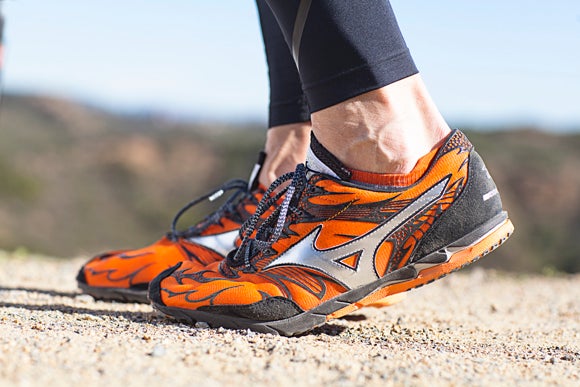Safely Transitioning To A Minimalist Running Shoe

Preparation and patience are key to avoiding injury.
Minimalist running has been all the rage for a while now as research continues to emerge about its potential benefits. Furthermore, proponents of the “less is more” footwear philosophy have become more vocal about their success stories.
So what exactly constitutes minimalist running? In short, it involves wearing a running shoe that doesn’t impede upon the body’s natural biomechanics. Traditional running shoes, on the other hand, are well-cushioned, may have denser midsole materials and built-in support devices to prevent excess motion at the ankle, and usually have a high heel to toe ratio — meaning the heel is elevated (10-12 mm is common) above the toe. Recent literature indicates that these safeguards and inherent support can actually weaken the foot over time — nor have they been shown to reduce instances of injury.
Minimalist running on the other hand, promotes the natural motion of the foot. Over time, the foot gets stronger so that it can essentially support itself and act as a natural shock absorber by striking on the midfoot or forefoot. Theoretically, stronger foot muscles and lower impact rates will reduce the chance of injury.
It is not the goal of this article to persuade you one way or the other to try minimalist running. After 10 years of coaching and more than 15 years of running at an elite level, I’ve encountered scores of runners who’ve have been helped tremendously by traditional running shoes. I’ve also met numerous runners whose injury problems were seemingly cured by moving into minimalist running shoes. The decision on which shoes to wear is a personal one based on your own injury history as well as your goals.
This article will explain how to safely transition to running in minimalist shoes. In order to stay healthy, which is the number one goal, it is imperative that you properly prepare the muscles in your feet, improve your proprioception, and develop a solid foundation of strength and flexibility before transitioning to a minimalist shoe.